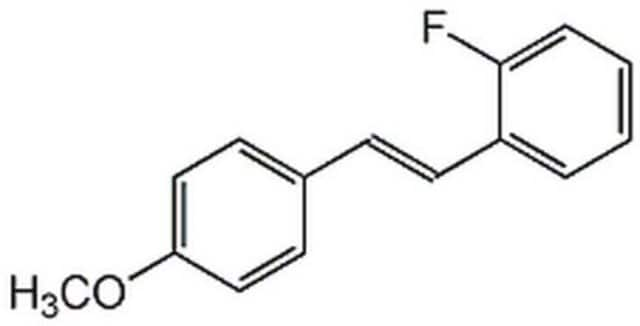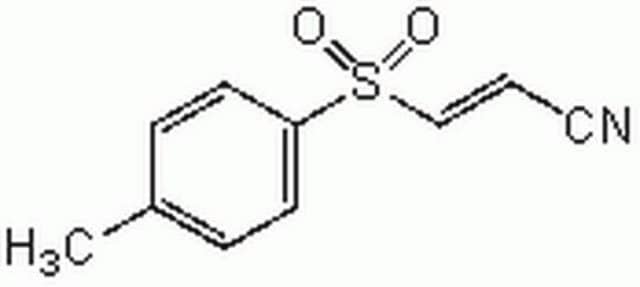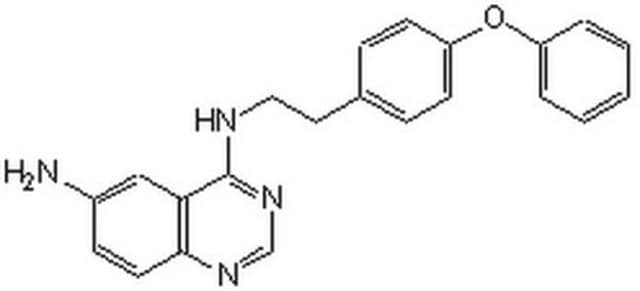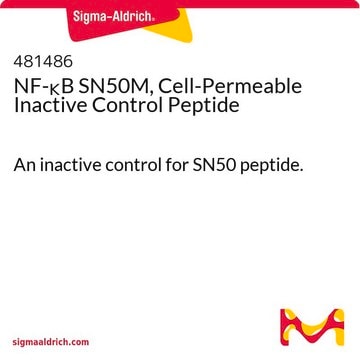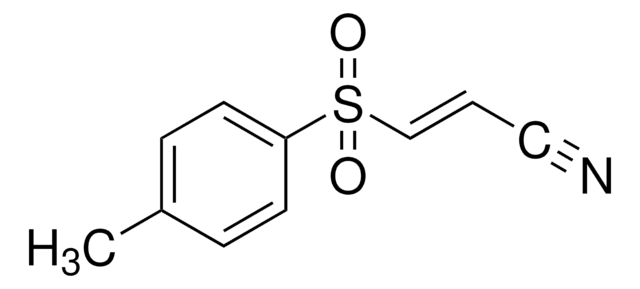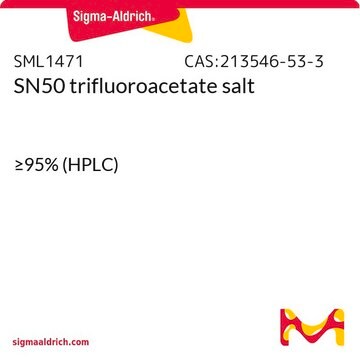481480
NF-κB SN50
≥97% (HPLC), lyophilized, NF-κB translocation inhibitor, Calbiochem®
Synonyme(s) :
NF-κB SN50, Cell-Permeable Inhibitor Peptide
About This Item
Produits recommandés
product name
NF-κB SN50, Cell-Permeable Inhibitor Peptide, NF-κB SN50, CAS 213546-43-3, is a cell-permeable peptide that contains the NLS sequence of NF-κB p50 linked to the hydrophobic region of K-FGF. Inhibits translocation of the NF-κB into the nucleus.
Niveau de qualité
Pureté
≥97% (HPLC)
Forme
lyophilized
Fabricant/nom de marque
Calbiochem®
Conditions de stockage
OK to freeze
desiccated (hygroscopic)
Solubilité
water: 5 mg/mL
Conditions d'expédition
ambient
Température de stockage
−20°C
Description générale
Actions biochimiques/physiologiques
translocation of the NF-κB active complex into the nucleus
Avertissement
Séquence
Forme physique
Reconstitution
Autres remarques
Informations légales
Certificats d'analyse (COA)
Recherchez un Certificats d'analyse (COA) en saisissant le numéro de lot du produit. Les numéros de lot figurent sur l'étiquette du produit après les mots "Lot" ou "Batch".
Déjà en possession de ce produit ?
Retrouvez la documentation relative aux produits que vous avez récemment achetés dans la Bibliothèque de documents.
Notre équipe de scientifiques dispose d'une expérience dans tous les secteurs de la recherche, notamment en sciences de la vie, science des matériaux, synthèse chimique, chromatographie, analyse et dans de nombreux autres domaines..
Contacter notre Service technique